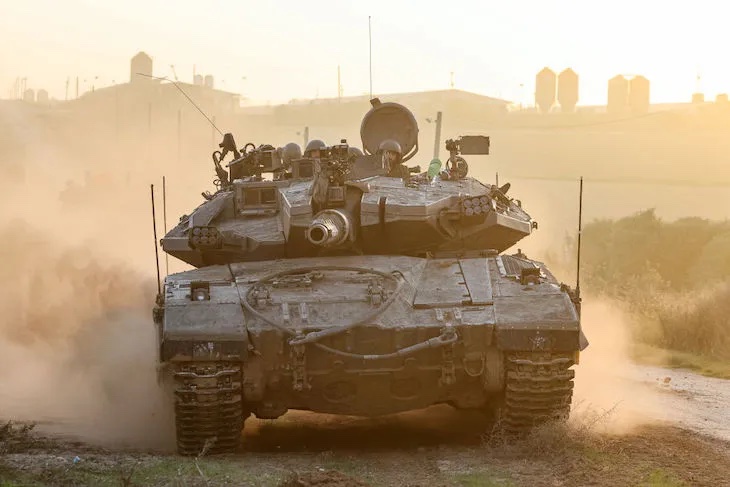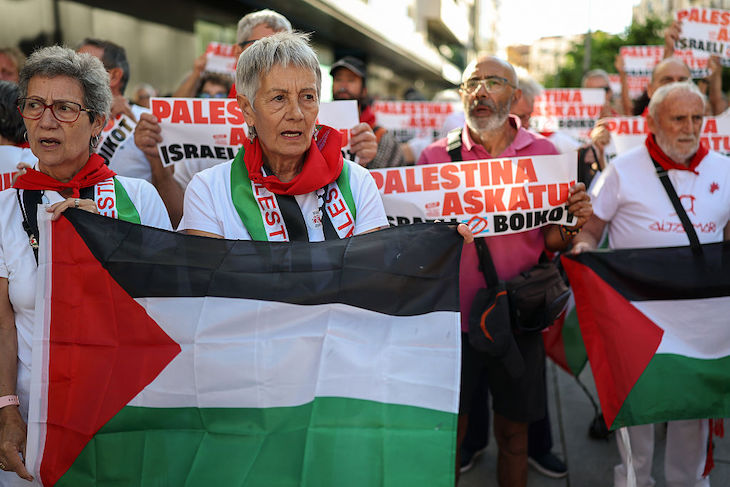The conflict in Gaza is about to enter a crucial phase as Israel continues its military campaign to destroy Hamas. After a seven-day pause in hostilities saw Hamas release 110 hostages in return for 240 Palestinians, the Israeli Defense Forces are now locked into a more complex and politically tricky battle as they venture into southern Gaza. If the IDF adopts the same tactics in the south as they did in the north of the Gaza Strip, then thousands more Palestinian civilians will die. There are signs, however, that Israel is changing tactics after bowing to pressure from allies.
Over 15,000 civilians have been killed, according to the Hamas-controlled health authority in Gaza. That number could easily double in the weeks or months ahead, unless Israel’s Prime Minister Benjamin Netanyahu orders his generals to change their tactics. While the Israeli government is determined to press ahead with its stated war aim of destroying Hamas, the country’s most senior politicians will know that their political room for maneuver is rapidly diminishing.
United States secretary of state Antony Blinken has repeatedly made it clear that the US wants Israel to change the way it is fighting against Hamas in order to reduce civilian casualties. This latest round of fighting could prove a crucial moment for Israel and might well be a line in the sand for President Joe Biden if his warnings about reducing Palestinian casualties go unheeded. Biden might soon consider whether he can continue supporting Israel. If the US changes tack, other western allies will follow. What that means — and how that weakening of support might materialize — is open to question and could potentially include anything from public condemnation to reducing military support.
President Emmanuel Macron of France has already warned Israel its goal of eliminating Hamas will take a decade, if it is achievable at all. “What is the total destruction of Hamas, and does anyone think it’s possible? If it is, the war will last ten years,” said Macron on Saturday. The French leader said that the “lasting security” of Israel was at stake and could not be guaranteed if it “comes at the cost of Palestinian lives, and therefore the resentment of all public opinion in the region. I think we’re at a point where the Israeli authorities are going to have to define their objective and desired end state more precisely.”
Although this latest phase of the campaign is still in its early days, it would appear that there has been something of a tactical change — albeit a small one. Following the collapse of the ceasefire on Friday, three days of heavy air and artillery bombardment followed. These airstrikes were aimed predominantly on the sprawling city of Khan Yunis, where Israel believes many Hamas commanders may be hiding, along with thousands of their heavily-armed gunmen. But yesterday, the IDF announced that a major ground campaign was underway involving tanks and thousands of foot soldiers conducting kill and capture operations.
The head of the IDF Herzi Halevi said over the weekend that troops were already fighting “strongly and thoroughly” in south Gaza. But this conventional counter insurgency approach will be vastly more dangerous for Israel than the strategy of targeting Hamas areas with unrelenting airstrikes and artillery barrages, Exposed infantry supported by tanks, armed drones and attack helicopters will have to clear areas street by street, ensuring that every room in every building is free from terrorists. Once an area has been cleared it will have to be occupied or it could quickly be recaptured by Hamas fighters. IDF soldiers will face threats from snipers, suicide bombers, improvised explosives and ambushes as they enter bomb damaged buildings. As has been seen when ground troops entered the northern part of Gaza, Hamas is likely to employ hit and run attacks, temporarily emerging from hidden tunnels to target tanks with rocket launchers and soldiers with automatic fire before disappearing underground. What this effectively means is that Israel, by bowing to US concerns over civilian deaths, will be exposing their own personnel to a much greater threat. This will, in all likelihood, lead to much greater casualties than those seen by the IDF in the early stages of the conflict; such a trade-off will be deeply unpopular with the Israeli public. Almost 400 IDF troops have been killed in action, with the majority losing their lives in the terrorist attacks of October 7.
Irrespective of what tactical changes are made, however, the Gaza strip appears to be drifting inexorably towards a humanitarian disaster, according to the UN. Almost two million people have been displaced, winter is coming, food, water and fuel are in short supply and the chances of anything changing significantly — apart from the increasing body count — looks very remote.
This article was originally published on The Spectator’s UK website.


























Leave a Reply